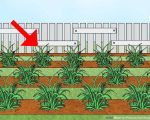Understanding Lawn Care Treatment Options: A Comprehensive Guide
As a homeowner who has spent years perfecting my lawn, I can attest that keeping your lawn healthy and lush requires more than just mowing and watering. Lawn care is a science that involves several treatments and practices to address different needs, from fertilization and pest control to aeration and weed management. Understanding these lawn care treatment options can seem overwhelming at first, but with the right knowledge, it's entirely possible to keep your lawn thriving year-round.
In this article, I'll guide you through various lawn care treatments, explain their benefits, and help you determine what your lawn may need. Whether you're a seasoned gardener or a first-time homeowner, this comprehensive guide will ensure that your lawn receives the care it deserves.
1. The Importance of Lawn Care Treatments
When I first moved into my home, I quickly learned that having a beautiful lawn wasn’t as simple as it seemed. There were areas where the grass was thin, patches that lacked color, and weeds that kept growing back no matter how much I tried to pull them out. What I didn’t realize was that lawn care treatments are essential for creating a healthy, thriving lawn. Without these treatments, your lawn can suffer from poor growth, pests, diseases, and other problems that can ultimately make it unsightly.
Lawn care treatments are designed to tackle specific issues and provide the necessary nutrients, protection, and care for your grass to grow strong and healthy. These treatments help balance soil health, control pests, improve grass quality, and prevent common lawn diseases. A well-maintained lawn can also improve your home’s curb appeal and create an outdoor space for relaxation and entertainment.
2. Common Lawn Care Treatments and Their Benefits
There are many different treatments available to improve the health of your lawn, each targeting specific issues. Below, I’ll walk you through some of the most common lawn care treatments, sharing my personal experiences and insights along the way.
2.1. Fertilization
Fertilization is one of the most important aspects of lawn care, and it’s something that I’ve learned to pay attention to over the years. Fertilizers provide essential nutrients, such as nitrogen, phosphorus, and potassium, that help your grass grow stronger, greener, and more resistant to diseases. When I first started fertilizing my lawn, I noticed a significant difference in the thickness and color of the grass. It became lusher and more vibrant, making my lawn look more inviting and well-maintained.
Fertilization should be done at the right times of year for maximum benefit. Typically, it's best to fertilize your lawn in the spring and fall, when grass is actively growing. However, the exact schedule can depend on the type of grass you have and your local climate. Be careful not to over-fertilize, as this can lead to burning and long-term damage to your lawn.
2.2. Aeration
Aeration was something I didn’t know much about until I started noticing compacted areas of my lawn where the grass struggled to grow. Aeration involves perforating the soil with small holes to allow air, water, and nutrients to penetrate deep into the roots. This process helps alleviate compaction, improve root growth, and promote healthier grass. When I aerated my lawn for the first time, I noticed a significant improvement in the overall health of the grass in those compacted areas.
Aeration is particularly beneficial for lawns with heavy foot traffic, clay-heavy soils, or those that haven’t been maintained properly for years. It’s typically done once a year, preferably in the fall or early spring when the grass is actively growing and can recover quickly.
2.3. Weed Control
Weeds can be one of the most frustrating challenges when it comes to lawn care. I’ve spent countless hours pulling weeds by hand, only to have them pop up again. That’s when I realized that weed control treatments were essential. There are two main types of weed control: pre-emergent and post-emergent.
Pre-emergent weed control is applied early in the season before weeds have a chance to germinate. This treatment forms a barrier in the soil that prevents weed seeds from taking root. Post-emergent weed control, on the other hand, is used to kill existing weeds. I’ve found that a combination of both types works best to keep weeds at bay throughout the year. It’s important to choose a weed control treatment that is safe for your specific type of grass, as some can be harsh and cause damage if not applied correctly.
2.4. Pest Control
Another lesson I learned over time was that pests, such as grubs, chinch bugs, and ants, can cause serious damage to your lawn if left unchecked. Pests can destroy grass roots, create unsightly patches, and make your lawn more vulnerable to diseases. Pest control is essential for keeping your lawn healthy, and there are a variety of treatments available, from natural options to chemical pesticides.
When I first had issues with grubs, I opted for a natural treatment that involved nematodes (microscopic worms) to target the grubs without harming beneficial insects. This method worked well, and I didn’t have to worry about harmful chemicals affecting the rest of my garden. However, for more severe infestations, chemical treatments may be necessary. Always follow the label instructions carefully to avoid damaging your lawn.
2.5. Disease Control
Lawn diseases, such as brown patch, dollar spot, and powdery mildew, can spread quickly and wreak havoc on your lawn. These diseases are often caused by poor soil conditions, overwatering, or high humidity. To prevent lawn diseases, it’s important to maintain a healthy lawn by properly watering, fertilizing, and mowing your grass.
If your lawn does develop a disease, there are fungicides available that can help treat the problem. However, I’ve found that addressing the underlying causes of the disease, such as improving soil drainage or reducing water buildup, is the best long-term solution. Regularly inspecting your lawn for signs of disease and taking immediate action can help prevent it from spreading.
3. Professional Lawn Care vs. DIY Lawn Care
While many homeowners prefer to handle their lawn care treatments themselves, others may choose to hire a professional lawn care service. There are pros and cons to both approaches. Personally, I started off with DIY lawn care, but after learning more about treatments and experimenting with different methods, I’ve been able to manage my lawn with great success. However, for those who are busy or unsure about the best treatment options, professional services can be a convenient and effective solution.
Professional lawn care services often provide customized treatment plans based on your lawn’s specific needs. They also have access to high-quality products and equipment that may be too expensive or difficult to obtain for the average homeowner. If you're considering a professional service, I recommend researching local companies, reading reviews, and ensuring they offer the treatments you need for your lawn.
4. Conclusion
Understanding lawn care treatment options is crucial for keeping your lawn healthy, beautiful, and thriving. Whether you choose to tackle lawn care treatments yourself or hire a professional, the key is to provide your lawn with the right nutrients, protection, and care. From fertilization and aeration to pest control and disease management, there are many options available to help you achieve the lawn of your dreams. With the right knowledge and commitment, anyone can create a lush, green lawn that enhances their outdoor space and boosts their curb appeal.
If you're looking for expert lawn care services or need help choosing the right treatments for your lawn, I recommend checking out the options available through Lawn Care Services for professional advice and services.








